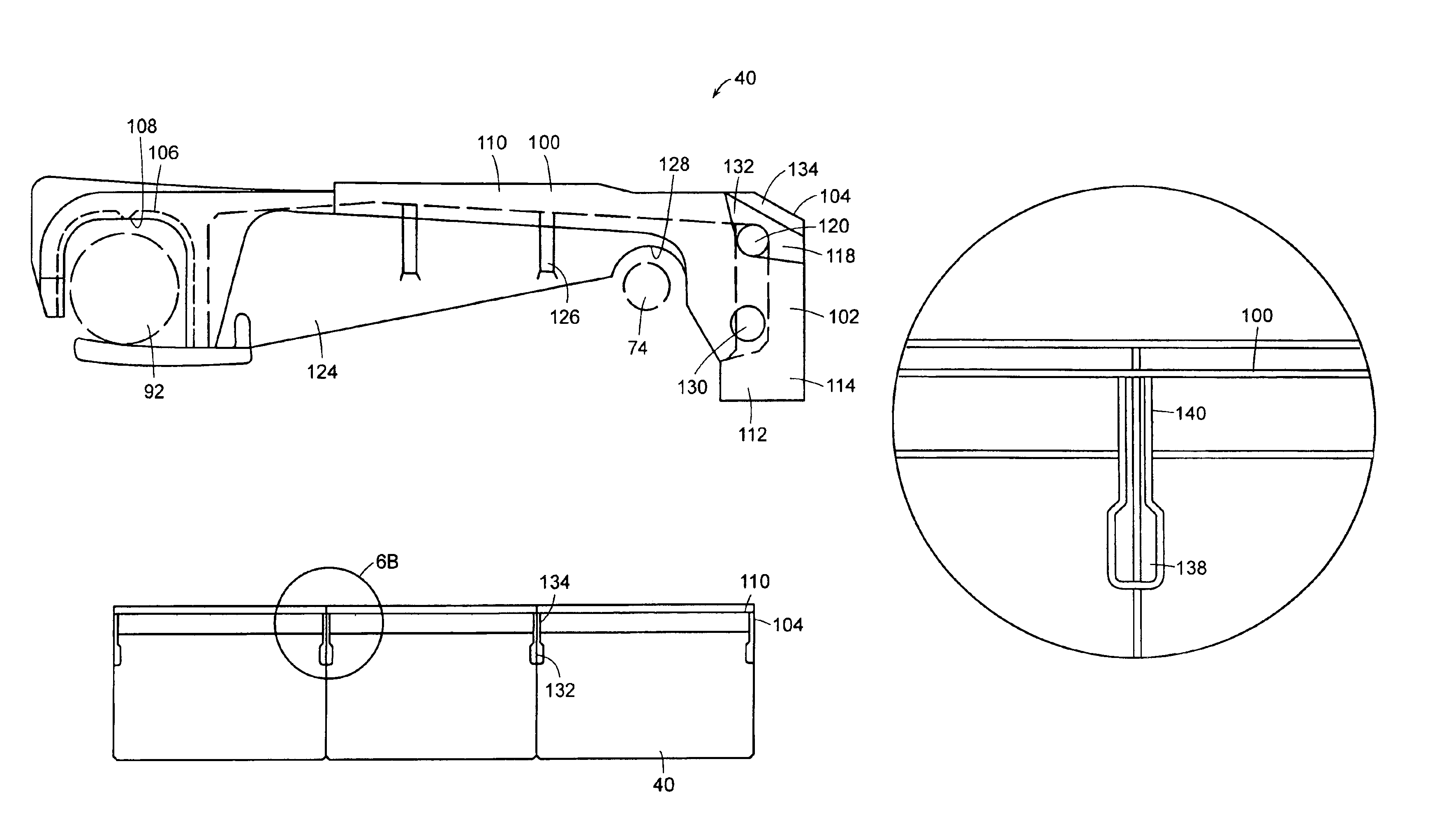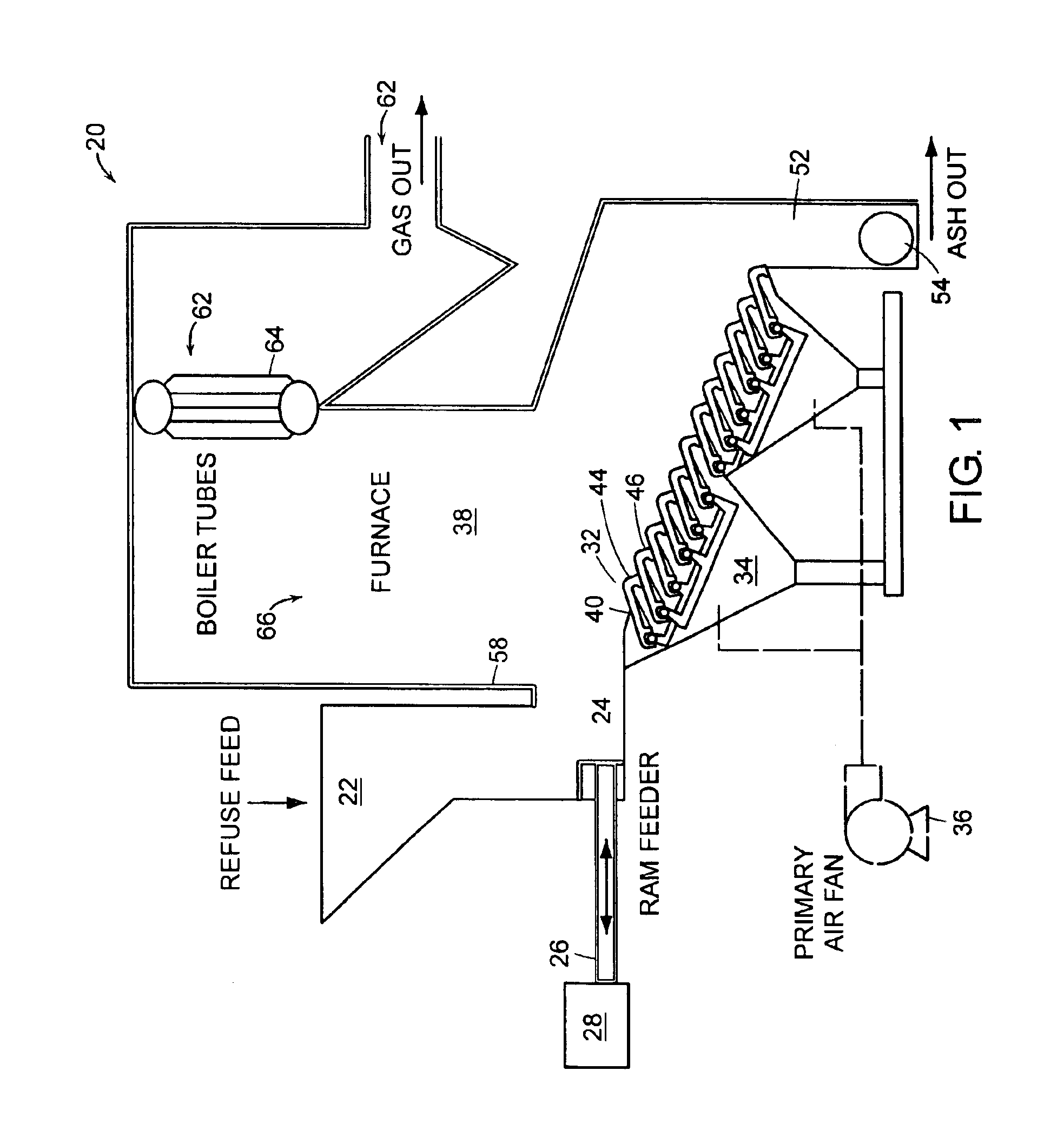Grate block for a refuse incineration grate
a technology of incineration grate and grate, which is applied in the direction of hollow bar grate, combustion types, lighting and heating apparatus, etc., can solve the problems of grate block temperature not being sufficiently reduced, grate block size not being filled, and some items being too large to achieve the effect of reducing the grate block cutting through trash and resulting in a greater movement of trash
- Summary
- Abstract
- Description
- Claims
- Application Information
AI Technical Summary
Benefits of technology
Problems solved by technology
Method used
Image
Examples
Embodiment Construction
[0037]Referring to the drawings in detail, there is illustrated a grate block in accordance with the present invention designated generally as 40. In a preferred embodiment, the grate block according to the invention directs air flow to allow for generally uniform burning of trash or refuse without thermal stress caused by intense combustion and cooling.
[0038]Referring to FIG. 1, a combustion furnace 20 has trash, also referred to as refuse or fuel, fed via a refuse feed chute 22. The trash is typically not homogeneous and can include wet yard waste, non-combustible material, and high energy content or caloric material. The trash drops upon a feed table 24, on which a pusher ram 26 is moved back and forth by a drive 28.
[0039]The feed table 24 is adjoined at the same height by the start of a grate 32 having a plurality of grate blocks 40 which consists of fixed rows 44 arranged stepwise and movable rows 46 arranged in-between the fixed rows 44. The movable rows 46 are shown in FIG. 1...
PUM
 Login to View More
Login to View More Abstract
Description
Claims
Application Information
 Login to View More
Login to View More - R&D
- Intellectual Property
- Life Sciences
- Materials
- Tech Scout
- Unparalleled Data Quality
- Higher Quality Content
- 60% Fewer Hallucinations
Browse by: Latest US Patents, China's latest patents, Technical Efficacy Thesaurus, Application Domain, Technology Topic, Popular Technical Reports.
© 2025 PatSnap. All rights reserved.Legal|Privacy policy|Modern Slavery Act Transparency Statement|Sitemap|About US| Contact US: help@patsnap.com



